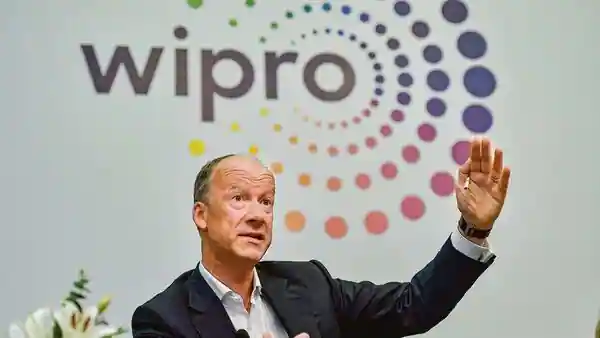[ad_1]
BENGALURU : Investors and analysts will eye the numbers Wipro puts out in its earnings release on 12 October. However, insiders will also pay attention to Project Quantum.
Billed as the biggest transformation project that took more than three years to implement and cost triple the money the country’s fourth-largest software services firm initially estimated, the software modernization plan has now become a source of anxiety for the senior management, including chief executive Thierry Delaporte.
Sample this: Wipro’s fourth-quarter and full-year earnings, declared on 29 April, were delayed by over 10 days as many of the commercial agreements, called invoices, couldn’t be processed on the new software, leading to over two dozen people from the finance department to manually punch in details in an excel spreadsheet, according to half a dozen executives privy to the development.
Delaporte, who took over as CEO in July 2020, was livid, and many executives were put on notice, according to two people privy to the development. One of these executives is Wipro’s chief operations officer, Sanjeev Singh, who is expected to move out of the company in the coming months. Another issue is the delay in processing relieving letters of outgoing staff. So, how did this job of improving its internal processes at Wipro, which employed 243,128 people and ended with $10.35 billion in revenue in the year to March 2022, go so wrong? A detailed questionnaire sent to Wipro on Monday seeking comment went unanswered.
Until a few years back, many internal processes inside Wipro were done manually, making it tedious. For example, even a simple process of revenue estimation in a particular project in a location would take time as executives from multiple teams would first discuss and then punch details in a spreadsheet.
Beginning 2018, after multiple discussions that stretched close to six months, Wipro’s then-CEO Abidali Neemuchwala green-lighted an assignment under which Wipro planned to squish over 150 processes across areas like book-keeping, finance and HR under a single dash-board kind of structure. In addition, Wipro would move its then SAP’s enterprise resource platform or ERP to the eponymous German software maker’s new S/4HANA software, and all applications running behind these processes would run on Google’s Cloud computing platform.
Wipro would license software and consultants from SAP. A small team from EY would work on “change management”: to coach Wipro’s internal executives to work once the new software kicks in. Additionally, about 30 executives from Designit, the Denmark-based firm that Wipro bought for $95 million in 2015, would work with 300 engineers of the Bengaluru-based company for the deployment of this software. Wipro called it Project Quantum because quantum is the smallest discrete unit of a phenomenon and would greatly improve how it worked. When work finally started in October 2018, the management had outlined a budget of $40 million and set a deadline of 14 months.
After two years of delay, when Project Quantum was finally rolled out on 27 January, it had spent $120 million, and much of the desired outcomes were far from reality. For companies, modernizing the internal technology landscape is a gargantuan task. But it should not have been a headache for Wipro, which has been installing and running such projects of installing software systems for two decades.
This delay and glitches in rolling out software inside Wipro raise the important question of its ability to complete such projects for its clients. “I don’t know if Project Quantum’s handling is symptomatic of how the company does work for its clients, but it has come as an embarrassment because the plan was to showcase it to our clients,” said the first executive.
But the project was doomed from the start, according to three executives.
The first reason was limited time. “A project of this magnitude could not have been completed within 14 months. Despite multiple requests, there was a kind of bravado among some senior leaders who wanted to show the CEO that the project would be completed. So, an irrational timeline leads to cutting corners,” said the first executive. “Every step in a long project has to undergo a testing process. But when you are running against time, you tend to defer some work to a later date. And when the project finally goes live, you see some of these points that were not checked earlier cascade into a big problem.”
Read the full story on www.livemint.com
Download The Mint News App to get Daily Market Updates & Live Business News.
[ad_2]
Source link
John Miller has been writing about science, gaming, and tech culture for over a decade. He’s a top-rated reviewer with extensive experience helping people find the best deals on tech and more.


